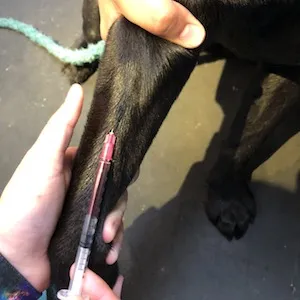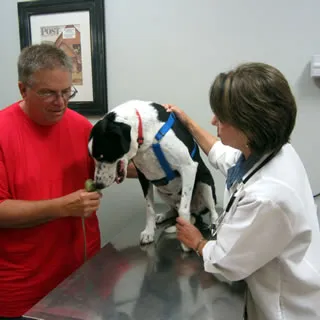As a loving dog owner, ensuring your furry companion’s health and comfort is a top priority. Among the most common threats to a dog’s well-being are pesky parasites like fleas and various types of worms. These microscopic invaders can cause discomfort, serious health issues, and even pose a risk to human family members if left unchecked. Fortunately, with consistent monthly flea and worm treatment for dogs, you can provide a powerful shield against these parasites, ensuring your dog lives a happy, healthy, and itch-free life. This comprehensive guide will delve into everything you need to know about protecting your dog from fleas and worms, from understanding the parasites themselves to choosing the most effective monthly prevention strategies.
Understanding Fleas and Their Impact on Dogs
Fleas are more than just an itchy nuisance; they are tiny, blood-sucking parasites that can cause a range of health problems for your dog. A single flea can lay up to 50 eggs a day, quickly leading to a full-blown infestation in your home and on your pet.
What are Fleas and How Do They Affect Dogs?
Fleas are small, dark brown insects, typically 1-3mm long, that thrive in warm, humid environments. They jump onto hosts to feed on their blood, often causing intense itching and discomfort. For dogs, a flea infestation can lead to:
- Flea Allergy Dermatitis (FAD): Many dogs are allergic to flea saliva, resulting in severe itching, redness, skin lesions, and hair loss from even a single bite.
- Anemia: In young puppies or heavily infested dogs, significant blood loss from fleas can lead to anemia, a potentially life-threatening condition characterized by weakness and pale gums.
- Tapeworm Transmission: Fleas can act as intermediate hosts for tapeworms. If a dog accidentally ingests an infected flea (e.g., during grooming), it can develop a tapeworm infection.
- Secondary Skin Infections: Constant scratching can break the skin, allowing bacteria to enter and cause secondary bacterial infections.
Signs Your Dog Has Fleas
Identifying fleas early is crucial for effective management. Look for these common signs:
- Excessive Scratching, Licking, or Biting: This is the most obvious sign. Your dog may be visibly uncomfortable.
- Flea Dirt: Small black specks resembling ground pepper on your dog’s skin or bedding. This is actually flea feces (digested blood). If you put it on a wet paper towel, it will turn reddish-brown.
- Visible Fleas: You might spot adult fleas moving quickly through your dog’s fur, especially on the belly, groin, or base of the tail.
- Red, Irritated Skin or Scabs: Patches of inflamed skin, scabs, or “hot spots” resulting from scratching.
- Hair Loss: Often seen around the tail, hind legs, and inner thighs due to constant scratching and biting.
Understanding Worms and Their Dangers to Dogs
Internal parasites, or worms, can be just as problematic as external ones, silently wreaking havoc on your dog’s digestive system, lungs, or even heart. Regular monthly worming for dogs is vital for comprehensive protection.
Common Types of Worms in Dogs
Dogs are susceptible to several types of intestinal worms, each with its own lifecycle and potential health risks.
- Roundworms (Toxocara canis, Toxascaris leonina): These are common, especially in puppies, often transmitted from mother to pup. They appear spaghetti-like and can cause a pot-bellied appearance, dull coat, vomiting, and diarrhea. In severe cases, roundworms can cause bloody diarrhea in dogs. Learn more about if can roundworms cause bloody diarrhea in dogs.
- Hookworms (Ancylostoma caninum, Uncinaria stenocephala): Small, thin worms that attach to the intestinal wall and feed on blood, leading to anemia, weight loss, lethargy, and dark, tarry stools. They can be transmitted through ingestion or skin penetration.
- Whipworms (Trichuris vulpis): These worms live in the large intestine and can cause chronic diarrhea (sometimes bloody or mucousy), weight loss, and anemia. They are challenging to diagnose as they shed eggs intermittently.
- Tapeworms (Dipylidium caninum, Taenia spp.): Often appear as rice-grain-like segments around the dog’s anus or in their feces. Dogs usually contract Dipylidium caninum by ingesting infected fleas, while Taenia spp. are acquired from eating infected rodents or raw meat.
- Lungworms (Angiostrongylus vasorum): Less common but serious, these worms affect the heart and lung arteries, leading to coughing, breathing difficulties, weight loss, and bleeding disorders.
- Heartworms (Dirofilaria immitis): While a different category, it’s worth noting that some monthly preventives cover heartworms. These worms live in the heart and pulmonary arteries, causing severe heart and lung disease.
Symptoms of Worm Infestation in Dogs
Symptoms can vary depending on the type and severity of the infestation, but common signs include:
- Changes in Appetite and Weight Loss: Despite eating normally, your dog may lose weight, or conversely, have an increased appetite due to nutrient malabsorption.
- Diarrhea or Vomiting: Often containing visible worms (roundworms) or blood/mucus (whipworms, hookworms).
- Pot-Bellied Appearance: Especially in puppies with roundworm infestations.
- Dull Coat and Lethargy: General poor health indicators.
- Scooting or Anal Itching: Often associated with tapeworm segments around the anus.
- Coughing or Breathing Difficulties: Can indicate lungworms or severe heartworm.
- Anemia: Pale gums and weakness, common with hookworms or heavy flea infestations.
Why Monthly Flea and Worm Treatment is Essential
The idea of consistent, year-round prevention might seem excessive, especially if your dog spends most of its time indoors or if you live in a colder climate. However, monthly flea and worm treatment for dogs is crucial for several compelling reasons.
Breaking the Life Cycle and Preventing Infestations
Parasites have complex life cycles. Fleas, for instance, spend only a small portion of their lives on your dog; the vast majority of their eggs, larvae, and pupae develop in your home environment. Monthly treatments target these stages, effectively breaking the cycle and preventing new adult fleas from emerging. Similarly, many worms have lifecycles that involve environmental contamination, and consistent deworming prevents accumulation within your dog and reinfection.
Year-Round Protection for All Climates
While parasite activity may seem to decrease in colder months, it rarely disappears entirely. Fleas can survive indoors year-round, and some worm larvae can overwinter in the soil or in intermediate hosts. Moreover, climate change can lead to longer active seasons for mosquitoes (heartworm vectors) and other parasites. Year-round treatment ensures continuous protection, regardless of the weather.
Protecting Your Dog’s Health
Beyond discomfort, untreated infestations can lead to severe health consequences. Fleas cause skin issues and anemia, while intestinal worms can lead to malnutrition, organ damage, and even death in severe cases. Consistent monthly treatment prevents these health crises.
Preventing Zoonotic Diseases (Human Transmission)
Many dog parasites are zoonotic, meaning they can be transmitted to humans. Roundworm eggs, for example, can be ingested by children playing in contaminated soil, leading to serious health problems like ocular larva migrans (eye damage). Hookworm larvae can penetrate human skin, causing itchy lesions. Monthly prevention significantly reduces the risk of your dog becoming a source of infection for your family. If you’re concerned about parasitic transmission, you may wonder, can I get roundworm from my dog? Similarly, for external parasites, can you get ear mites from dogs? Understanding these risks underscores the importance of consistent treatment.
Cost-Effectiveness
Treating an established flea infestation or a severe worm burden is often more complicated, expensive, and stressful than preventing it in the first place. Monthly prevention is a proactive, cost-effective approach to long-term pet health.
Types of Flea and Worm Treatment for Dogs Monthly
The market offers a wide array of products designed for monthly flea and worm treatment for dogs. Understanding the different options available will help you make an informed decision with your veterinarian.
Oral Medications
Oral preventives are popular for their convenience and effectiveness.
- Chewable Tablets: These are often flavored, making them palatable for most dogs. They work systemically, meaning the active ingredients are absorbed into your dog’s bloodstream, killing fleas and/or worms when they feed. Many oral medications offer broad-spectrum protection against fleas, ticks, and various intestinal worms.
- Pros: Easy to administer (often seen as a treat), no residue on fur, safe for swimming immediately after administration, generally very effective.
- Cons: Some dogs may be finicky eaters and refuse the tablet.
Topical Spot-Ons
Applied directly to the skin, typically between the shoulder blades, topical treatments are another popular choice.
- Liquid Formulations: These solutions are absorbed into the skin’s oil glands and hair follicles or into the bloodstream, spreading across the body to provide protection.
- Pros: Easy to apply for many owners, effective against fleas and often other external parasites like ticks, with some also covering intestinal worms.
- Cons: Can leave a residue on the fur, require a drying period (no bathing or swimming immediately after), and some dogs may have skin sensitivities.
Injectable Preventives
While not typically “monthly” for fleas and intestinal worms, there are injectable options for heartworm prevention (e.g., every 6 or 12 months). For fleas and intestinal worms, monthly oral or topical treatments are the standard.
Combination Products: The Power of All-in-One Protection
Many modern preventives combine multiple active ingredients to offer protection against a wider range of parasites, including fleas, ticks, heartworms, and various intestinal worms. These “all-in-one” solutions are highly convenient and are often the preferred choice for comprehensive protection. Discussing with your vet to find the best flea and worm treatment for dogs that offers broad-spectrum protection is highly recommended.
Active Ingredients to Look For
Common active ingredients in flea and worm treatments include:
- For Fleas (and Ticks): Fipronil, Imidacloprid, Selamectin, Sarolaner, Afoxolaner, Fluralaner, Lotilaner, Nitenpyram. These work by disrupting the parasite’s nervous system.
- For Intestinal Worms: Pyrantel, Febantel, Praziquantel, Milbemycin Oxime, Moxidectin. These typically paralyze or kill the worms, allowing them to be expelled.
- For Heartworms: Ivermectin, Milbemycin Oxime, Selamectin, Moxidectin.
 Microscopic worms and parasites under examination
Microscopic worms and parasites under examination
Choosing the Right Monthly Treatment for Your Dog
Selecting the optimal monthly flea and worm treatment for dogs involves considering several factors specific to your dog and your lifestyle. Always consult your veterinarian before starting any new preventive regimen.
Factors to Consider
- Your Dog’s Age and Weight: Dosages are strictly based on weight. Puppies require specific formulations and often need more frequent deworming initially.
- Dog’s Health Status: Underlying health conditions, sensitivities, or medications can influence which products are safe and effective. Dogs with certain sensitivities (e.g., MDR1 gene mutation in some herding breeds) may have adverse reactions to certain medications like Ivermectin, though many modern preventives are safe at preventive doses.
- Lifestyle and Environment:
- Outdoor vs. Indoor: Dogs that spend more time outdoors, visit dog parks, or hike in wooded areas face a higher risk of exposure to a wider range of parasites.
- Travel: If you travel with your dog, especially to regions where certain parasites are more prevalent, you might need specific protection.
- Exposure to Wildlife: Dogs with access to yards frequented by wild animals (foxes, coyotes, rodents) are at higher risk for certain worms and fleas.
- Specific Parasite Risks in Your Area: Your veterinarian can advise on the prevalent parasites in your geographic region. Some areas have higher tick populations, while others might have a greater heartworm risk.
- Ease of Administration: Some owners find oral chews easier, while others prefer topical solutions. Consistency is key, so choose a product you can reliably administer.
- Combination vs. Single-Purpose Products: For comprehensive protection against fleas, ticks, heartworms, and intestinal worms, an all-in-one monthly product is often the most convenient and effective choice.
- Cost: While price is a consideration, prioritize effectiveness and safety. Remember, prevention is usually far less expensive than treating a severe infestation or disease.
The Role of Your Veterinarian
Your veterinarian is your best resource for determining the most appropriate monthly flea and worm treatment for dogs. They will consider:
- A thorough physical examination: To assess your dog’s overall health.
- Diagnostic testing: Including fecal exams for intestinal worms and heartworm tests (required annually for most heartworm preventives).
 Veterinarian drawing blood from a dog for flea and worm diagnostics
Veterinarian drawing blood from a dog for flea and worm diagnostics - Discussion of your dog’s lifestyle and medical history.
- Prescription requirements: Many effective parasite preventives are prescription-only, ensuring they are used safely and appropriately.
Administering Monthly Flea and Worm Treatments Effectively
Proper administration is as important as choosing the right product. Follow these guidelines to maximize effectiveness and ensure your dog’s safety.
Reading and Following Instructions Carefully
Always read the product label and your veterinarian’s instructions thoroughly. This includes:
- Dosage: Administer the correct dose based on your dog’s weight. Never guess or approximate.
- Frequency: Most products are “monthly,” meaning they should be given every 30 days. Mark your calendar or set reminders.
- Method of Administration: For oral medications, ensure your dog consumes the entire dose. For topicals, apply directly to the skin (not fur) in the recommended areas and avoid bathing your dog for the specified period.
- Storage: Store medications as directed, away from children and other pets.
Tips for Successful Administration
- Oral Medications:
- Mix with a small amount of palatable food (e.g., peanut butter, cheese, a treat pouch).
- Use a pill popper for reluctant dogs.
- Ensure the entire tablet is consumed.
- Topical Spot-Ons:
- Part the fur firmly to apply the liquid directly onto the skin.
- Apply in an area your dog cannot easily lick (e.g., between the shoulder blades).
- Prevent children and other pets from touching the application site until dry.
What if You Miss a Dose?
If you miss a dose, contact your veterinarian immediately. They can advise on the best course of action, which may involve administering the missed dose as soon as you remember and then restarting a new monthly schedule, or retesting your dog, especially for heartworm. Never “double up” on doses without veterinary guidance.
Addressing Flea and Worm Infestations: Beyond Prevention
Even with regular monthly prevention, occasional infestations can occur, especially if a dose is missed or if your dog encounters a particularly high parasite load. Knowing how to react is crucial.
When Prevention Isn’t Enough: Treating an Active Infestation
If you suspect your dog has fleas or worms despite prevention, it’s essential to act quickly.
- Contact Your Veterinarian: They can confirm the type of parasite and recommend the appropriate treatment. For fleas, this might involve a rapid-kill product in addition to environmental control. For worms, specific dewormers are needed depending on the worm species.
 Pet owner consulting with a veterinarian about monthly flea and worm treatment for their dog
Pet owner consulting with a veterinarian about monthly flea and worm treatment for their dog - Environmental Flea Control: If fleas are present, treating your home is as important as treating your dog. This involves:
- Vacuuming: Frequently vacuum carpets, rugs, and upholstery, and immediately dispose of the vacuum bag contents outside.
- Washing Bedding: Wash all pet bedding, blankets, and your own linens in hot water.
- Flea Sprays/Foggers: In severe cases, you may need to use EPA-approved household flea sprays or foggers. Follow instructions carefully and ensure pets and people are out of the house during treatment.
- Professional Pest Control: For persistent infestations, consider professional help.
- Monitoring and Follow-up: After treatment, continue monitoring your dog for signs of reinfection. Your vet may recommend follow-up fecal exams or re-testing.
Potential Side Effects and When to Worry
While monthly flea and worm treatment for dogs are generally safe and effective, some dogs may experience mild side effects.
- Common Side Effects:
- Oral: Upset stomach, vomiting, diarrhea, lethargy, loss of appetite.
- Topical: Skin irritation, redness, hair loss at the application site, temporary greasiness of fur.
- When to Contact Your Vet Immediately:
- Severe vomiting or diarrhea
- Persistent lethargy or weakness
- Difficulty breathing
- Seizures or tremors
- Severe allergic reactions (e.g., facial swelling, hives)
- Any unusual or severe reaction that concerns you.
Always inform your vet about any medications or supplements your dog is taking to prevent potential adverse interactions.
 Dog resting in a recovery cage at a veterinary clinic after intense flea and worm treatment
Dog resting in a recovery cage at a veterinary clinic after intense flea and worm treatment
Long-Term Parasite Management and Prevention Strategies
Maintaining a consistent routine for monthly flea and worm treatment for dogs is the cornerstone of effective parasite control. However, a holistic approach includes several other practices to minimize risk and ensure optimal health.
Regular Veterinary Check-ups
Annual or semi-annual veterinary visits are crucial. During these check-ups, your vet will:
- Perform a thorough physical examination, including checking for signs of parasites.
 Veterinarian examining a dog during a routine check-up for flea and worm prevention
Veterinarian examining a dog during a routine check-up for flea and worm prevention - Conduct diagnostic tests like fecal exams and heartworm tests.
- Discuss your dog’s current lifestyle and assess their risk for various parasites.
- Recommend any adjustments to your prevention plan based on current health, age, or local parasite trends.
Environmental Hygiene
Keeping your dog’s living environment clean is paramount.
- Indoor: Regularly vacuum, wash pet bedding, and keep areas where your dog sleeps or rests clean.
- Outdoor: Keep your yard tidy, mow grass regularly (fleas prefer tall grass), and remove any pet waste promptly. Prompt removal of feces is essential to prevent the spread of worm eggs.
- Limiting Exposure: Avoid areas known to be heavily infested with fleas or ticks, and prevent your dog from consuming wild prey, which can carry parasites.
Understanding Resistant Parasites
While uncommon, some parasite populations can develop resistance to certain active ingredients over time. This is one reason why:
- Veterinary Consultation is Key: Your vet stays informed about local resistance patterns and can recommend products most likely to be effective in your area.
- Rotation of Products (Under Vet Guidance): In some cases, your vet might suggest rotating between different types of preventives or active ingredients, though this is not a general recommendation for all situations and should only be done under professional guidance.
- Adherence to Dosage: Always use the correct dosage. Underdosing can contribute to resistance development.
Holistic Health and Nutrition
A healthy dog with a strong immune system is better equipped to handle parasite exposure.
- Balanced Diet: Feed a high-quality, balanced diet appropriate for your dog’s age, breed, and activity level.
- Regular Exercise: Keeps your dog fit and healthy.
- Stress Reduction: A less stressed dog is often a healthier dog.
Myths vs. Facts About Flea and Worm Treatment
- Myth: Indoor dogs don’t need flea and worm prevention.
- Fact: Fleas and mosquitoes (heartworm vectors) can easily enter homes. People can also track in flea eggs or larvae. Indoor dogs are still at risk, though potentially lower.
- Myth: Garlic or other natural remedies prevent parasites effectively.
- Fact: There is no scientific evidence that natural remedies like garlic effectively prevent fleas, ticks, or worms. Relying on unproven methods can leave your dog unprotected and lead to serious health issues. Only use products proven safe and effective by regulatory bodies like the FDA.
- Myth: You only need to treat for fleas/worms during certain seasons.
- Fact: Due to indoor environments, climate change, and varied parasite lifecycles, year-round monthly flea and worm treatment for dogs is the gold standard recommended by veterinarians to ensure continuous protection.
- Myth: If my dog doesn’t show symptoms, they don’t have worms.
- Fact: Many worm infestations, especially in early stages, are asymptomatic. By the time symptoms appear, the infestation can be severe and cause significant internal damage. Regular testing and prevention are crucial.
 Illustration of internal damage to a dog's heart and lungs caused by severe worm infestation
Illustration of internal damage to a dog's heart and lungs caused by severe worm infestation
- Fact: Many worm infestations, especially in early stages, are asymptomatic. By the time symptoms appear, the infestation can be severe and cause significant internal damage. Regular testing and prevention are crucial.
Conclusion
Providing consistent monthly flea and worm treatment for dogs is one of the most important responsibilities of pet ownership. It’s not just about comfort; it’s about safeguarding your dog’s long-term health, preventing serious diseases, and even protecting your family from zoonotic infections. By understanding the risks, knowing the available treatment options, and working closely with your veterinarian, you can ensure your beloved companion remains happy, healthy, and free from the threat of parasites. Make year-round prevention a non-negotiable part of your dog’s care routine, and enjoy the peace of mind that comes with knowing you’ve provided the best possible protection. If you have any questions or concerns about your dog’s parasite prevention plan, don’t hesitate to consult your veterinarian for personalized advice.
References
- American Veterinary Medical Association (AVMA). Parasite Control Guidelines. (Retrieved from AVMA.org)
- Companion Animal Parasite Council (CAPC). Guidelines for Parasite Control in Dogs. (Retrieved from CAPCvet.org)
- U.S. Food and Drug Administration (FDA). Approved Animal Drugs and Pet Medications. (Retrieved from FDA.gov)
- Centers for Disease Control and Prevention (CDC). Parasites – Zoonotic Diseases. (Retrieved from CDC.gov)

 Veterinarian drawing blood from a dog for flea and worm diagnostics
Veterinarian drawing blood from a dog for flea and worm diagnostics Pet owner consulting with a veterinarian about monthly flea and worm treatment for their dog
Pet owner consulting with a veterinarian about monthly flea and worm treatment for their dog Veterinarian examining a dog during a routine check-up for flea and worm prevention
Veterinarian examining a dog during a routine check-up for flea and worm prevention Illustration of internal damage to a dog's heart and lungs caused by severe worm infestation
Illustration of internal damage to a dog's heart and lungs caused by severe worm infestation